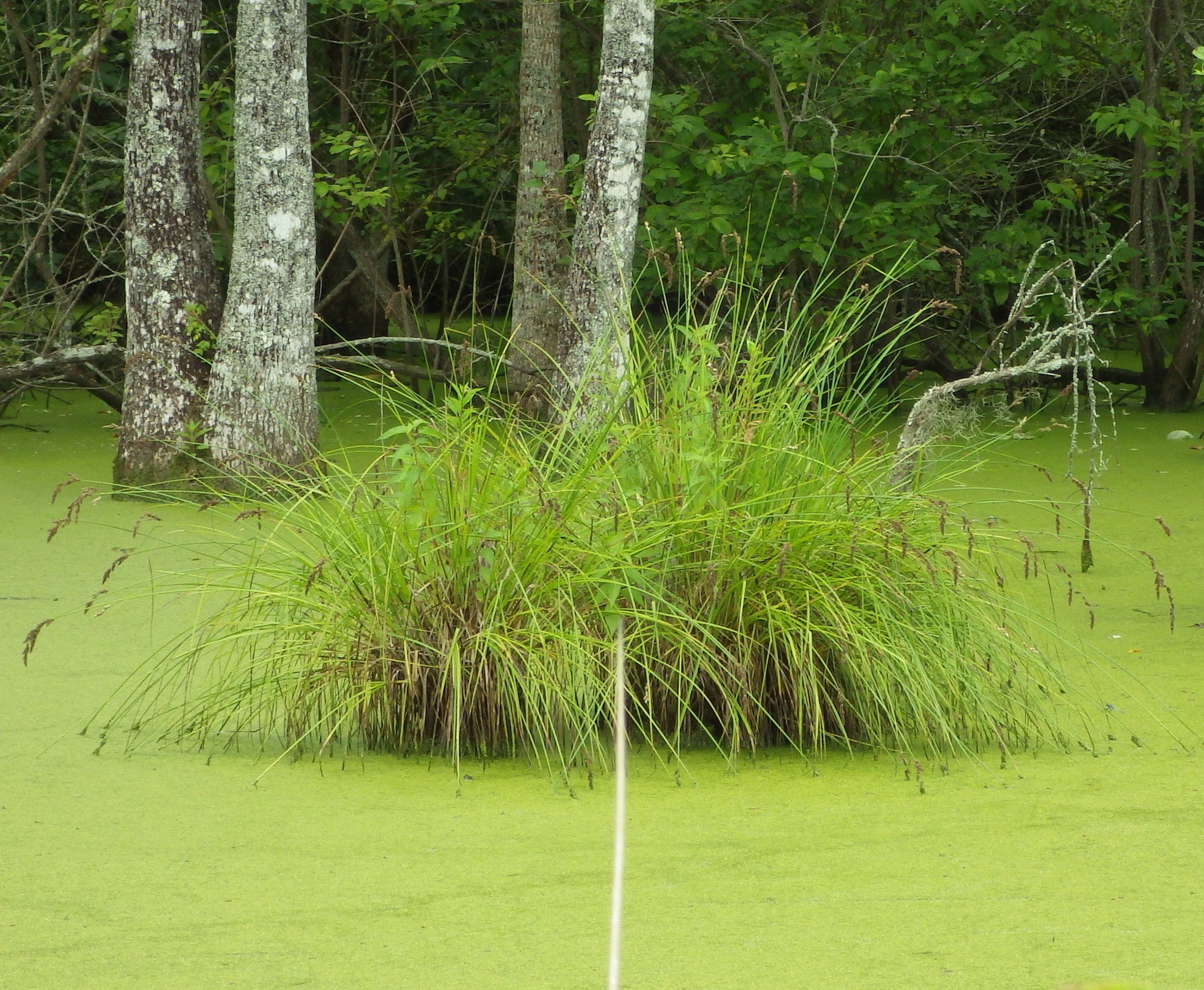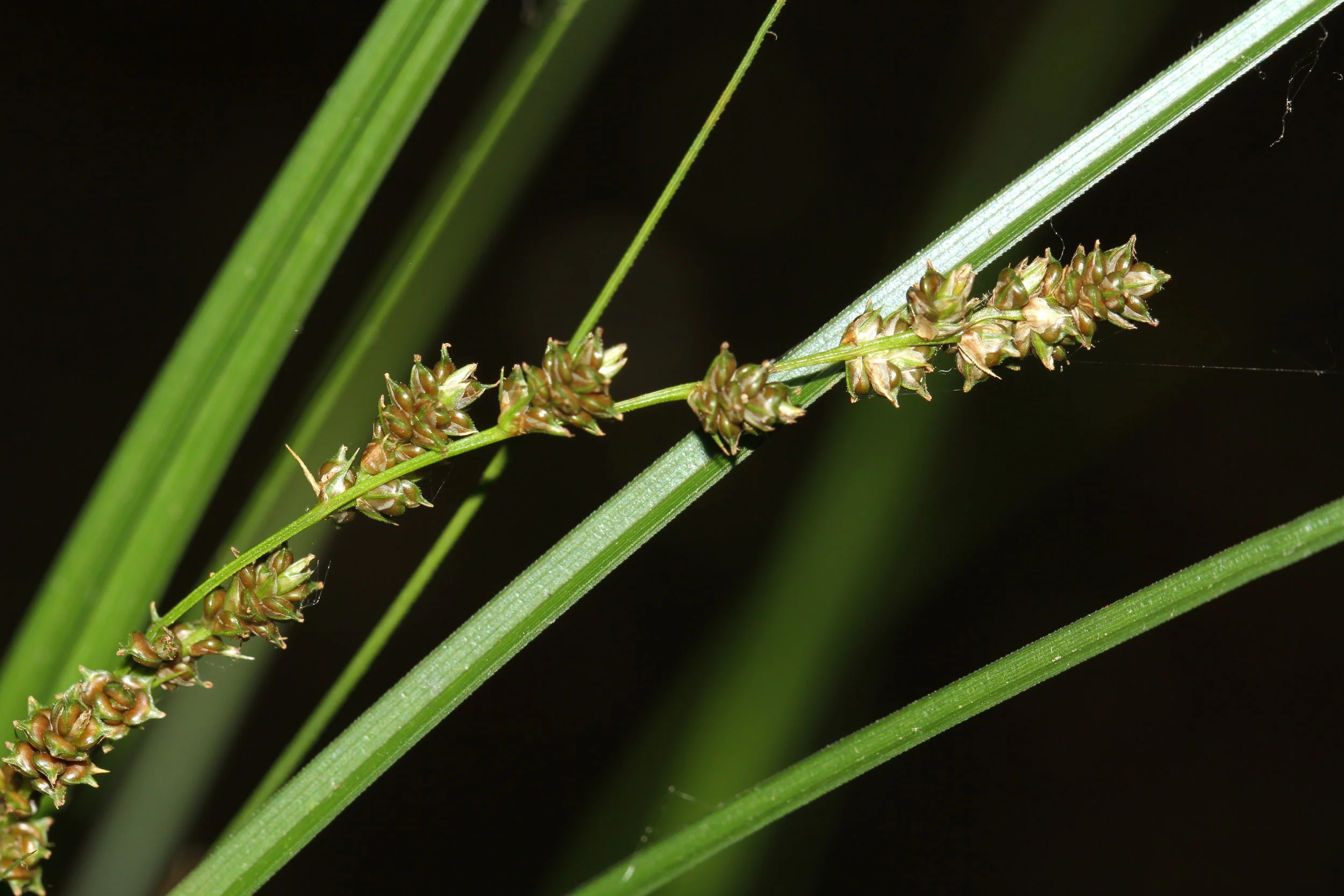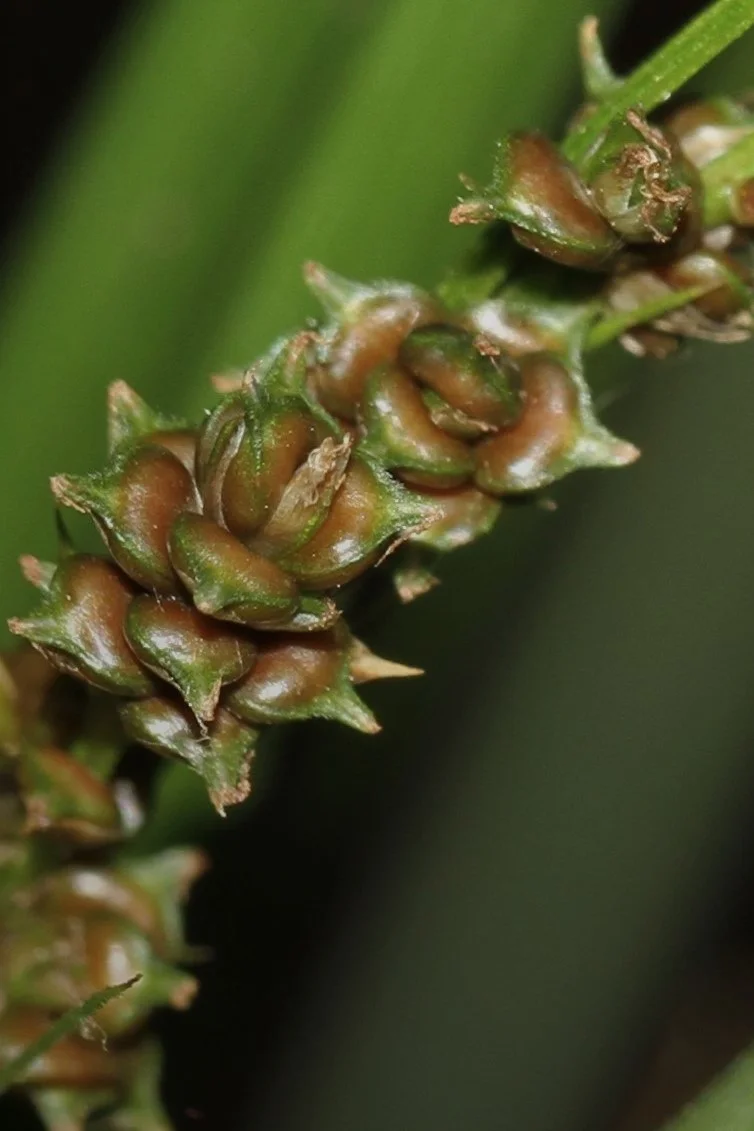Sedges (Carex spp.) simply do not get the attention they deserve. I am part of this problem because like so many others, I have breezed over them in vegetation surveys as “just another graminoid.” This is truly a shame because not only are sedges absolutely fascinating organisms, they are immensely important ecologically as well. I am working hard to get to know sedges better so that I too can fully appreciate their place in our ecosystems. One of the coolest specialist sedges I just recently learned about is the so-called cypress-knee sedge (Carex decomposita). For all intents and purposes, this sedge is considered something of an epiphyte!
The cypress-knee sedge has a fondness for growing on wood. Most often you will find it rooted to the buttresses and knees of bald cypress (Taxodium distichum) or the swollen trunk of a swamp tupelo (Nyssa aquatica). It can also be found growing out of rotting logs that float on the surface of the water. It is a long lived species, with individuals having records stretching back through decades of wetland plant surveys. When supplied with the conditions it likes, populations can thrive. That is not to say that it does well everywhere. In fact, it has declined quite a bit throughout its range.
Juvenile cypress-knee sedges establishing in moss along the water line of a bald cypress.
One of the key wetland features that the cypress-knee sedge needs to survive and prosper is a stable water level. If water levels change too much, entire populations can be wiped out either by drowning or desiccation. Even before the sedge gets established, its seeds require stable water levels to even get to suitable germination sites. Each achene (fruit) comes complete with a tiny, corky area at its tip that allows the seeds to float. Floating seeds are how this species gets around. With any luck, some seeds will end up at the base of a tree or on a floating log where they can germinate and grow. If water levels fluctuate too much, the seeds simply can’t reach such locations.
Its dependence on high quality wetlands is one of the major reasons why the cypress-knee sedge has declined so much in recent decades. Aside from outright destruction of wetlands, changes in wetland hydrology can have dire consequences for its survival. One of the major issues for the cypress-knee sedge is boat traffic. Boat wakes create a lot of disturbance in the water that can literally scour away entire populations from the base of trees and logs. Another major threat are changes to upstream habitats. Any alteration to the watersheds of wetland habitats can spell disaster for the cypress-knee sedge. Alterations to creeks, streams, and rivers, as well as changes in ground water infiltration rates can severely alter the water levels in the swamps that this sedge depends on for survival.
Closeups of the infructescence showing details of the perigynia (fruit).
Less obvious threats also include changes in plant cover. If the wetlands in which it grows become too dense, the cypress-knee sedge quickly gets out-competed. To thrive, the cypress-knee sedge needs slightly more sunlight than a densely forested wetland can provide. In fact, some have even noted that cypress-knee sedge populations can explode after selective logging of such wetlands. Such explosions have been attributed to not only extra sunlight but also the addition of woody debris, which provides much needed germination sites. That being said, such explosions can only be maintained if woody debris is left in place and further wetland disturbances do not continue.
The plight of the cypress-knee sedge stands as a reminder of just how poorly we treat wetlands around the globe. Aside from providing valuable ecosystem services for the human environment (flood control, water filtration, etc.), wetlands are home to countless unique species. Only by treating wetlands betters and attempting to restore some of what has been lost will we ever do better by wetland species like the cypress-knee sedge. Hopefully by showcasing species like this, people will begin to feel a little more compassion towards the ecosystems on which they depend. Please consider supporting a wetland conservation and restoration initiative in your region!
Photo Credits : LDWF Natural Heritage Program [1] & Paul Marcum (Midwest Graminoides) [2] [3] [4]



